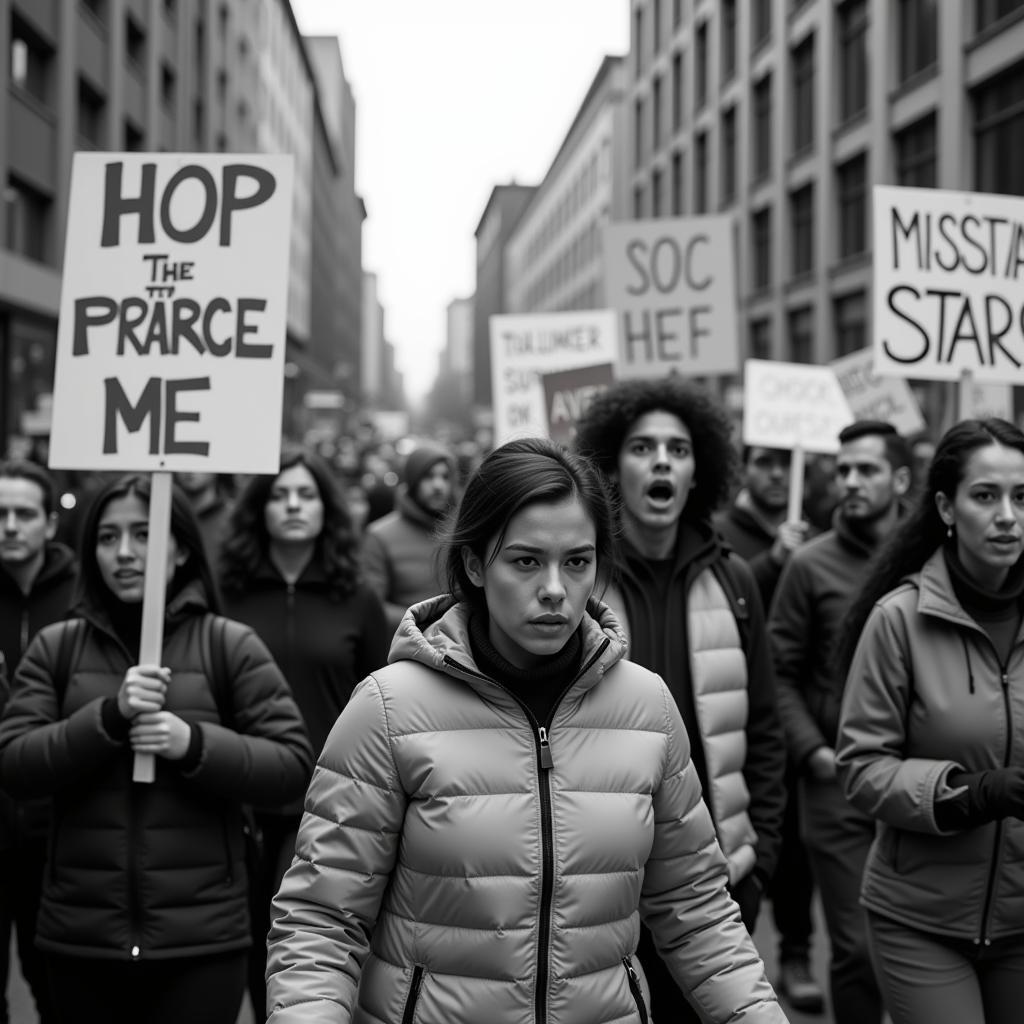The phrase “Menace To Society Pictures” evokes powerful imagery, often associated with depictions of social unrest, violence, and the breakdown of societal norms. But what does this imagery truly represent, and how can we understand its impact on our perceptions of the world? This article delves into the complexities surrounding these representations, exploring their historical context, cultural significance, and potential for both harm and positive change.
Understanding the Search for “Menace to Society Pictures”
Why do people search for “menace to society pictures”? The motivations behind this search can vary greatly. Some might be looking for stills from the iconic film Menace II Society, seeking to analyze its portrayal of urban life. Others may be researching the visual language used to depict social issues like poverty, crime, or political instability. Understanding these motivations is crucial to providing relevant and nuanced information. What are the underlying questions and concerns that drive this search? Are individuals seeking to understand the root causes of social problems, or are they simply looking for sensationalized imagery?
One of the key questions to consider is the intent behind the search. Are people looking for information about the film “Menace II Society,” or are they searching for broader depictions of social issues? This distinction helps us tailor the content to meet the specific needs of the audience. For those interested in the film, we can provide links to resources like menace to society movie pictures or menace ii society pictures.
The Power of Visual Narratives
Images have the power to tell complex stories, conveying emotions and ideas that transcend language barriers. “Menace to society pictures” can be powerful tools for raising awareness about social issues, sparking dialogue, and inspiring action. However, they can also perpetuate stereotypes and reinforce negative perceptions. It’s crucial to examine these images critically, considering their context and the potential impact they may have on viewers.
 Protest Photography Depicting Social Unrest
Protest Photography Depicting Social Unrest
From Film to Reality: The Impact of “Menace II Society”
The film Menace II Society had a profound impact on how urban life and social issues were portrayed in media. It offered a raw and unflinching look at the realities faced by many marginalized communities, sparking important conversations about poverty, violence, and systemic inequality. You can further explore this topic through resources like menace ii society film and delve into the cultural impact of the film’s soundtrack with menace to society songs.
How Can We Use Imagery for Positive Change?
While “menace to society pictures” can be disturbing, they can also be catalysts for positive change. By understanding the complex narratives behind these images, we can use them to raise awareness, foster empathy, and inspire action. It’s crucial to engage with these visuals critically, considering the perspectives they represent and the potential impact they have on our understanding of social issues.
 Community Building and Positive Change Through Collective Action
Community Building and Positive Change Through Collective Action
Dr. Anya Sharma, a sociologist specializing in visual culture, states, “Images of social breakdown can be powerful motivators for change. They can force us to confront uncomfortable realities and inspire us to work towards a more just and equitable society.”
Moving Towards a More Peaceful Future
“Menace to society pictures” can be a powerful reminder of the challenges we face as a global community. However, they also offer an opportunity for reflection, dialogue, and ultimately, action. By engaging with these images critically and constructively, we can work towards a future where such imagery becomes a relic of the past, replaced by visuals of hope, resilience, and social harmony.
 Global Peace Initiative Through Dialogue and Understanding
Global Peace Initiative Through Dialogue and Understanding
Professor David Chen, a peace and conflict studies expert, adds, “The key lies in shifting the narrative. We need to move beyond simply depicting the problems and focus on showcasing solutions, highlighting the power of community, resilience, and collective action.”
What are some common misconceptions about “menace to society pictures”?
Often, these images are viewed as purely negative, overlooking the complex social and economic factors that contribute to the situations they depict.
How can we interpret these images responsibly?
By considering the context, avoiding generalizations, and focusing on the human stories behind the images, we can foster a deeper understanding of social issues.
How can we use these images to promote dialogue and understanding?
Creating safe spaces for discussion, encouraging critical thinking, and fostering empathy are crucial steps in utilizing these images for positive change.
What is the role of art and media in shaping our perceptions of social issues?
Art and media play a significant role in shaping public discourse, highlighting injustices, and inspiring social change.
How can we avoid perpetuating harmful stereotypes when sharing these images?
Contextualizing the images, challenging assumptions, and promoting diverse perspectives are essential to avoid reinforcing negative stereotypes.
What are some alternative ways to visually represent social challenges?
Focusing on solutions, highlighting community resilience, and showcasing individual stories of hope can offer a more nuanced and empowering perspective.
How can we support organizations working to address the issues depicted in these pictures?
Researching reputable organizations, volunteering time, and donating resources can contribute to positive change.
In conclusion, “menace to society pictures” can serve as a stark reminder of the complex challenges facing our world. However, these images can also be catalysts for positive change, inspiring dialogue, empathy, and action. By engaging with them thoughtfully and critically, we can work towards a future where such imagery is replaced by visuals of hope and peace. For further assistance or information, please contact us at Phone Number: 02043854663, Email: [email protected] Or visit our address: Khu 34, Bắc Giang, 260000, Vietnam. We have a 24/7 customer support team.